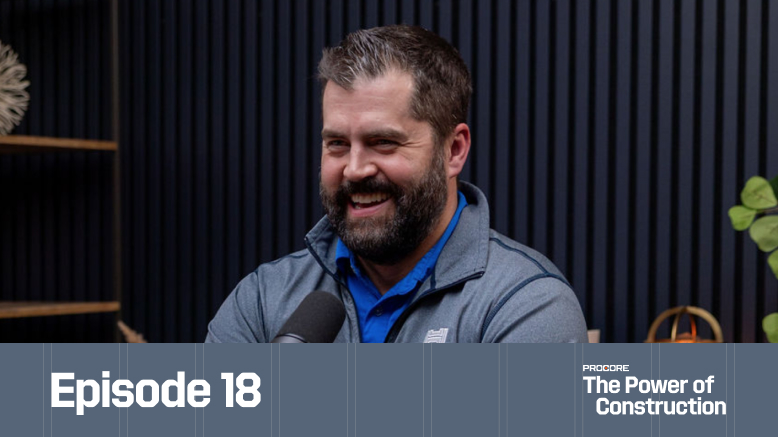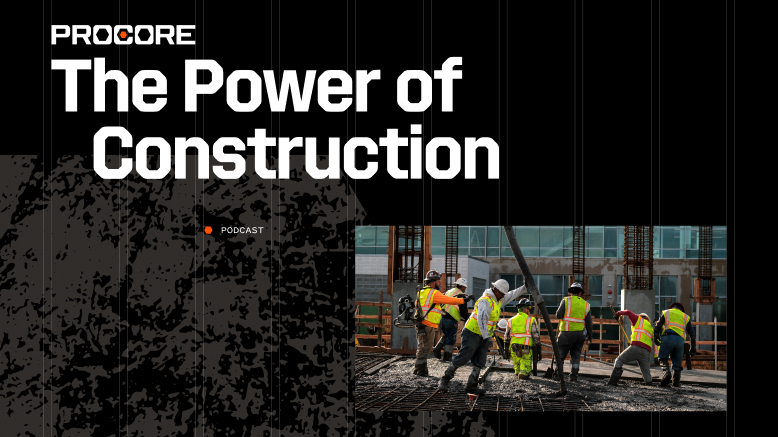— 10 min read
Construction Estimating Methods: Techniques for Predicting Costs with Confidence


Last Updated Aug 27, 2024

Ben Ashburn
Staff Trainer & Program Manager
22 articles
Ben Ashburn is a Senior Construction Education Trainer at Procore. After a successful career as a construction estimator — working his way up from estimating manager to senior estimator — Ben has spent the most recent part of his career in construction sharing his skills with other as a construction educator. Ben has an extensive background in construction education: He has been an assistant professor in the Department of Construction Science at Texas A&M, and lectured about estimating, scheduling, management, and other related construction topics at Murray State University. He has been a construction training and learning development partner with Procore since 2019.

Kacie Goff
Contributing Writer
90 articles
Kacie Goff is a construction writer who grew up in a construction family — her dad owned a concrete company. Over the last decade, she’s blended that experience with her writing expertise to create content for the Construction Progress Coalition, Newsweek, CNET, and others. She founded and runs her own agency, Jot Content, from her home in Ventura, California.
Last Updated Aug 27, 2024

While construction is an industry that relies on technical prowess and accuracy, it also regularly uses guesswork. Both general contractors and specialty contractors have to estimate how much a project will require of them to accurately bill the appropriate party.
At the end of the day, construction projects rely on guesses — but fortunately, these guesses are educated. With established construction estimating methods, professionals can tap into historical data, sophisticated algorithms, and trusted tools to project how much a project will cost. To arrive at an accurate construction cost estimate, a few key things help: more work on the estimate, more data to inform it and more experience from the estimator.
Beyond that, leveraging specific estimating methods in construction shapes the outcome. Different methods are best used at different project stages, so it helps the person or team tasked with creating the estimate to understand their options.
Learn More About Construction Estimating
If you’re not already familiar with construction estimating as a concept, we have a starter guide to introduce you. We also have resources to show you how the estimate transforms into a bid and ultimately ties to final project costs.
Table of contents
Scaling Up Accuracy in Construction Estimating Methods
While there are a number of construction estimating methods (many experts point to more than 40), they can be broadly lumped into three main buckets.
1. Conceptual Estimating
Conceptual estimating happens in the earliest stages of a project. In fact, a general contractor (GC) might even provide this ballpark estimate to an owner before the owner engages a design firm, allowing them to determine if the project is feasible. The owner may also bring the conceptual estimate to their lender to secure the financing necessary to move the project forward.
This type of estimating tends to be the least accurate. In most cases, GCs will come up with a number based on their experience with previous projects that were similar in scope and nature. This type of estimating doesn’t dig into the details. It doesn’t count individual materials, for example. Instead, it provides a rough idea of how much the project will cost.
2. Budget Estimating
As a project moves forward, it needs more detailed information to inform its budget. Here, contractors — both GCs and specialty contractors — may engage with the design firm to help them flesh out project costs. Similarly, GCs who have been engaged by an owner to provide an estimate might solicit numbers from other parties (like a mechanical, plumbing, or electrical contractor) to inform the budget.
While this type of estimating drills deeper than conceptual estimating, numbers are generally still broadly applicable and relatively vague. For example, the mechanical contractor might estimate that HVAC will cost $22 per square foot of the project. Or a plumber might quote $1,000 for every toilet.
The way this phase of developing the construction cost estimate works varies depending on the project delivery method. On a design-build project, for example, the budget estimate often gets updated as the project progresses to a new milestone. And because the design estimate and construction estimate are intertwined, the projected costs are often more accurate even in this middle phase.
3. Detailed Estimating
Eventually, the estimate needs to evolve to the point where it’s a number all parties can trust. At that point, stakeholders turn to detailed construction estimating methods.
While each company or individual contractor usually has their own process here, the goal of a detailed construction cost estimate is to provide a reliable number that accurately reflects the project cost. This estimate arrives at the number the contractor will put on their bid form. And if they’re selected for the project, that means they’ll sign a contract tying them to this amount.
For specialty contractors, the detailed estimate needs to account for:
- Labor (the hours the project will take multiplied by the going rate for the type of work required)
- Equipment (whether that’s the cost to rent equipment or accounting for the toll the project will take on their owned equipment)
A general contractor’s detailed estimate needs to factor in all of the above, plus:
- Scheduling among various subcontractors
As a result, creating a detailed construction cost estimate is a time-consuming process that requires a granular view. The contractor needs to break down the project into digestible pieces in order to assign a cost to each. Their goal is to arrive at a total estimate that’s low enough to win the contract but high enough to support their profit margin.
Ideally, this detailed estimate should be carried through the project. Stakeholders should track how the estimate performs against actual project costs. This information can help them create more precise estimates in the future.
Different Estimating Methods in Construction
Generally, contractors use more granular construction estimating methods as they move from a conceptual estimate to a detailed one.
Many experts argue that there are dozens of different estimating methods in construction that could be deployed to progress the estimate forward. These seven are some of the most common.
1. Analogous Estimating
Analogous estimating is one of the most commonly used estimating methods in construction — albeit it one of the least accurate ones. This methodology uses past projects. It usually relies on a seasoned professional to make an educated guess at the planned project’s pricing based on the cost of previous similar projects.
Analogous estimating can be useful in the preconstruction phase. But once a detailed estimate is required, estimators should use more reliable construction estimating methods.
2. Parametric Estimating
Parametric estimating is somewhat like analogous estimating in that it leverages pricing from past projects. But this option takes a more granular approach, applying parameters (hence the name) from the project to arrive at the estimate.
The estimator may know, for example, that roofing usually costs $X per square foot and each roofing hatch usually costs $Y. By applying the project’s parameters around roof size and number of hatches, they can move toward an accurate estimate for the roof price.
Most parametric estimating leverages an algorithm to crunch the numbers. Many contractors use a spreadsheet or software to do the heavy lifting as far as the math is concerned.
3. Unit-Based Estimating
Unit-based projections often happen in the conceptual estimating phase.
Some construction estimating methods determine a relevant unit and predict the price of the project from there. If a hospital in the area generally costs $1 million per bed to build, for example, an estimator could predict that a 100-bed hospital project will cost $100 million.
Sometimes, the unit is much simpler. Many estimators have a rough cost per square foot. Knowing the total square footage of the project allows them to arrive at an estimated price.
Explore data and trends for building materials prices.
Get the latest U.S. retail prices and view historical trends for common building materials.
4. Assemblies and Systems Estimating
These construction estimating methods are somewhat similar to unit-based estimates in that they break projects into individual components. Instead of distinct units, though, this methodology breaks the project into systems and assemblies.
In doing so, it arrives at one of the more reliable estimating methods in construction. By thinking through the project and breaking it into these pieces, the estimator is likely to consider everything the project requires. In doing so, they arrive at a more accurate estimate.
An eight-foot wall, for example, could be considered an assembly. The estimator would then capture all of the costs for that wall assembly, including materials like drywall, studs, trim, and paint along with labor. At that point, they can estimate the cost of all eight-foot walls on the project by simply multiplying the cost per foot times the number of lineal feet.
When using assembly and systems estimating methods in construction projects, most people leverage MasterFormat CSI Divisions. This allows them to capture assemblies and systems from all of the categories required on the project, from concrete to plumbing to finishes.
In some cases, they might also turn to pre-built assemblies, like the ones captured in the cost books from RSMeans Data.
5. 5D BIM Estimating
As technology advances, so do construction estimating methods. If the project uses building information modeling (BIM), for example, the BIM model can help to estimate costs.
Experts call this 5D BIM. It overlays cost and material estimations on 4D BIM (the BIM model plus scheduling) to help create an accurate idea of the project’s costs.
Here, technology does a lot of the legwork. If the team has tagged individual components in the model with pricing data, it can automate a 3D takeoff to estimate material costs, for example.
6. Bottom-Up Estimating
Bottom-up construction estimating methods are exactly what they sound like. They consider the project in extremely granular detail, considering everything that’s required to build it from the bottom up.
This methodology requires a detailed analysis of the project documents and the build’s overall scope. By assessing everything that the project will require — breaking it into the smallest possible tasks and assigning costs to each task — the estimator should be able to accurately project the overall cost.
7. Three-Point Estimating
Somewhat similar to the program evaluation and review technique (PERT), this estimating methodology tasks the estimator with arriving at two different numbers. They estimate both the highest cost of the project and the lowest.
The high-end estimate might account for delays, surcharges, and any number of other factors that can drive up pricing, while the low-end estimate assumes everything goes as smoothly and cost-efficiently as possible. Three-point estimating assumes that stakeholders can expect costs to most likely fall somewhere in the middle of those two extreme estimates.
Clearly, there are several different construction estimating methods to choose from. In fact, many companies leverage a combination of methodologies, moving from one method to another as the job moves forward.
How Technology is Transforming Construction Estimating Methods
As technology advances, estimating methods in construction projects are changing, too. For starters, more sophisticated tech is enabling teams to better capture historical data on project costs and tie them to construction cost codes. Then, software allows them to input that data into estimating tools, often leveraging complex algorithms to drive more accurate projections. 3D takeoffs enabled by BIM models are a prime example here.
And as artificial intelligence (AI) progresses, more of this work should get easier. An AI tool that’s been trained on a company’s historical pricing data and what’s publicly available (like assembly pricing from published cost books) should be able to quickly and accurately develop estimates for a wide range of projects.
A key part of the evolution of construction estimating methods hinges on a company’s commitment to tracking its estimates and capturing deviations. If they have a software solution that moves with them through the entire project, for example, it can flag areas where the estimate was inaccurate. This allows the company to validate good estimates and adapt where estimates fall short, supporting more precision on future builds.
Technology should make construction estimating methods more accurate while decreasing the work required from estimators, whether they’re estimating a large-scale, complex heavy civil project or a relatively simple residential build.
In the meantime, though, the key to an accurate construction cost estimate lies in blending historical data, experience on similar projects, and a careful evaluation of the project’s requirements. The more time the estimator spends creating the estimate and the more they can leverage pricing from past projects, the more likely they are to arrive at an estimate that helps them win the bid while supporting their profit margin.
Was this article helpful?
Thank you for your submission.
100%
0%
You voted that this article was . Was this a mistake? If so, change your vote
Scroll less, learn more about construction.
Subscribe to The Blueprint, Procore’s construction newsletter, to get content from industry experts delivered straight to your inbox.
By clicking this button, you agree to our Privacy Notice and Terms of Service.
Thank you!
You’re signed up to receive The Blueprint newsletter from Procore. You can unsubscribe at any time.
Categories:
Written by

Ben Ashburn
Staff Trainer & Program Manager | Procore Technologies
22 articles
Ben Ashburn is a Senior Construction Education Trainer at Procore. After a successful career as a construction estimator — working his way up from estimating manager to senior estimator — Ben has spent the most recent part of his career in construction sharing his skills with other as a construction educator. Ben has an extensive background in construction education: He has been an assistant professor in the Department of Construction Science at Texas A&M, and lectured about estimating, scheduling, management, and other related construction topics at Murray State University. He has been a construction training and learning development partner with Procore since 2019.
View profile
Kacie Goff
Contributing Writer | Procore Technologies
90 articles
Kacie Goff is a construction writer who grew up in a construction family — her dad owned a concrete company. Over the last decade, she’s blended that experience with her writing expertise to create content for the Construction Progress Coalition, Newsweek, CNET, and others. She founded and runs her own agency, Jot Content, from her home in Ventura, California.
View profileExplore more helpful resources

How Close Are We to Bridging the Design-Build Divide?
For decades, construction decisions have often been made based on gut instinct. But what if the real barrier to transformation isn’t technology—it’s the divide between design and construction? In episode...

What Happens When Data Drives the Business?
Construction has long been seen as a low-margin industry. But what if the real problem isn’t the margins—it’s how decisions get made? In episode 17 of The Power of Construction,...

Preconstruction Partnerships: How Safety Pros Can Collaborate with Estimating & Proposal Teams
Construction leaders and safety professionals are developing a strong understanding of how safety programs positively impact project outcomes. When safety is woven into every aspect of operations from pre-construction to...

Estimate vs. Budget: Tools to Guide Construction Financial Planning
Whether building a residential home, a commercial complex or a large-scale infrastructure development, understanding and managing costs is key to completing a project on time and within financial limits. Effective...
Free Tools
Calculators
Use our calculators to estimate the cost of construction materials for your next project.
Templates
Find a template to help you with your construction project tasks.
Material Price Tracker
Get the latest U.S. retail prices and view historical trends for common building materials.
Glossary
Explore key terms and phrases used in the industry.
